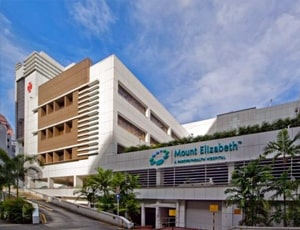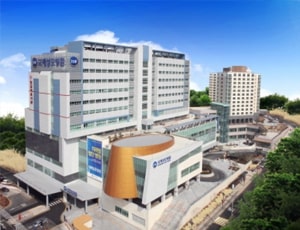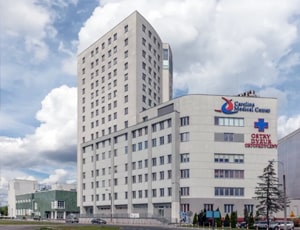Kyphoplasty is also known as balloon kyphoplasty. It is a minimally-invasive surgical procedure that can repair spinal fractures caused by cancer, osteoporosis, or benign lesions. It is not used for spinal stenosis treatment.
Kyphoplasty procedure is designed to relieve the intense pain caused by vertebral compression fractures, to stabilize the bone or to bring back some or all of the lost vertebral body height due to the compression fracture. Kyphoplasty or balloon kyphoplasty is a superb replacement of the typical conventional therapies such as analgesic use, bed rest, and bracing. It is a quick remedy for severe pain due to vertebral compression. It eliminates the pain almost immediately and the risk of complications during kyphoplasty is low. However, it is not intended for the treatment of arthritis or intervertebral disc disease. Kyphoplasty is different from discectomy, which is conducted in case of a herniated disc. Discectomy completely removes the damaged or herniated disc from the vertebrae of the patient.
Laminectomy and vertebroplasty are two other procedures that follow different techniques for stabilizing fractures. Laminectomy works by removing the lamina to create space, vertebroplasty works by injecting cement into the broken or cracked spine. For the same reason, vertebroplasty cost is different from kyphoplasty cost.
Kyphoplasty is typically suggested in case of:
The decision to undergo kyphoplasty is often based on the presence of these symptoms and their impact on the patient's quality of life. Common signs and symptoms that may precede kyphoplasty include:
Before the kyphoplasty procedure, the doctor orders some medical tests to determine the precise location of the fracture.
Kyphoplasty starts by administering a local or general anaesthesia to the patient. The patient remains unconscious during the entire procedure, and therefore, is not able to feel anything. After the anaesthesia, the patient may receive antibiotics to prevent infection.The patient is then made to lie down on their stomach and is connected to the pulse, heart, and blood pressure monitors. The following the four steps in kyphoplasty procedure:
No stitches are required during the procedure, but the incision is bandaged. The bone cement dries rapidly and forms an internal cast that holds the vertebral body in place. Kyphoplasty procedure takes less than one hour if only one vertebra is being treated.
Typically, kyphoplasty does not have any severe side effects. You may experience some minor side discomfort such as soreness and redness of the skin. These problems usually resolve on their own or with minimal medical management. However, you should consult the doctor in case the symptoms persist for more than a few days.
The chances of risks and complications from kyphoplasty are overall low. But some complications may arise nonetheless. Extravasation is one such procedure that can take place in some cases but it is very rare. Extravasation refers to the leakage of bone cement from where it is supposed to stay. The risk of severe bleeding, nerve injury, spinal fluid leak, paralysis, and pulmonary embolus is less than two percent. Kyphoplasty is a safe procedure but call your doctor right away if you experience severe muscle pain, continues leg pain, back or rib pain that is really bad or gets worse over time, fever, numbness or tingling sensation, and weakness.


Singapore, Singapore
Mount Elizabeth Hospital is a multispecialty healthcare facility operated by Parkway Health. The hos...more
![]() Private Driver / Limousine Services
Private Driver / Limousine Services
![]() International Cuisine
International Cuisine
![]() Phone in Room
Phone in Room
![]() Online Doctor Consultation
Online Doctor Consultation

Seoul, South Korea
Catholic kwandong university international St Mary hospital is one of its kind hospitals in Korea. I...more
![]() TV in room
TV in room
![]() Phone in Room
Phone in Room
![]() Health Insurance Coordination
Health Insurance Coordination
![]() Mobility Accessible Rooms
Mobility Accessible Rooms

Warsaw, Poland
History Carolina Medical Center is one of the best and clinically advanced orthopedics and sports m...more
![]() Airport Transfer
Airport Transfer
![]() Choice of Meals
Choice of Meals
![]() Interpreter
Interpreter
![]() SIM
SIM

Neurosurgeon
Ghaziabad, India
18 Years of experience
USD 22 for video consultation

Orthopedic Surgeon
Bursa, Turkey
10 of experience
USD 175 for video consultation

Spine Surgeon
Gurgaon, India
20 Years of experience
USD 50 for video consultation

Spine & Neurosurgeon
Delhi, India
24 Years of experience
USD 32 for video consultation
Q: What is the success rate of kyphoplasty?
A: Kyphoplasty is an important treatment for immediate pain reduction. It has been proven that kyphoplasty stabilizes the compressed bone and helps resume the body height and alignment of the vertebra. Kyphoplasty has over 90 percent of success rate. It is associated with significant improvement in mobility and ability to perform normal daily activities. Patients have also reported improved quality of life, vitality and better mental health.
Q: What is the typical spinal stenosis treatment?
A: Spinal stenosis is mostly managed with the help of medications, physical therapy, and surgical options such as decompression, laminectomy, or spinal fusion.
Q: What is the kyphoplasty cost?
A: Kyphoplasty cost varies from one hospital to another and depends on several factors such as the complexity of the condition, the surgical expertise of the doctor, and hospital charges. The cost of kyphoplasty should not be confused with vertebroplasty cost as both are separate procedures.
Q: What are the risks of kyphoplasty?
A: Stroke, cardiac arrest, heart attack, and cement leakage are some of the risks associated with kyphoplasty. However, their rate of occurrence is quite low.